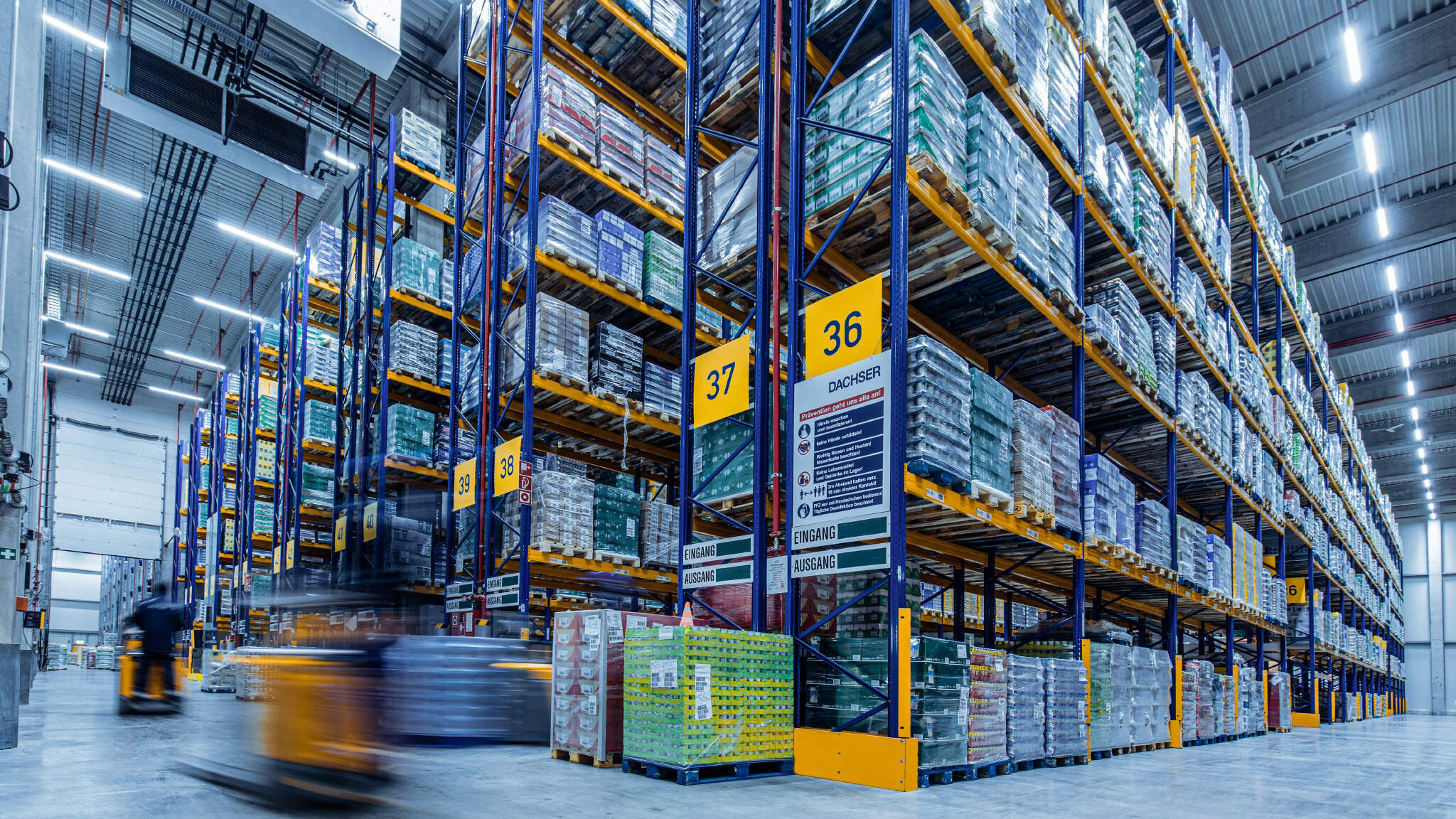Ready to turn insight into action?
We help organisations transform ideas into measurable results with strategies that work in the real world. Let’s talk about how we can solve your most complex supply chain challenges.

The Growing Importance of Last-Mile Fulfilment
The final leg of a product's journey—last-mile fulfilment (LMF)—has become the most complex and expensive aspect of retail supply chains. In an era of e-commerce dominance, instant gratification, and rising customer expectations, retailers must ensure their last-mile networks operate seamlessly, cost-effectively, and sustainably.
However, last-mile fulfilment is not just about getting goods to consumers quickly. It requires a well-orchestrated supply chain where network optimisation, demand forecasting, and inventory replenishment are synchronised to balance service levels, cost efficiency, and working capital investment.
This article explores:
- How retail networks must be designed to support efficient last-mile fulfilment
- The role of forecasting and replenishment in balancing product availability and capital costs
- How technology and automation can enhance last-mile efficiency
1. The Foundations of Last-Mile Fulfilment: Retail Supply Chain Networks
Retailers must reimagine their supply chain networks to support last-mile logistics effectively. A legacy distribution model—relying solely on centralised warehouses and long-haul transport—no longer meets the needs of modern omnichannel consumers.
Instead, retailers are investing in decentralised fulfilment strategies such as:
a) Micro-Fulfilment Centres (MFCs)
Retailers are increasingly leveraging micro-fulfilment centres—small, urban warehouses located closer to consumers. These MFCs:
✅ Reduce delivery times and transportation costs
✅ Improve inventory availability by replenishing local demand points faster
✅ Enhance same-day or next-day delivery capabilities
b) Store-Based Fulfilment Models
Many retailers are turning their stores into fulfilment hubs, utilising the existing footprint to enable ship-from-store and click-and-collect (BOPIS) models. This approach:
✅ Reduces the need for separate e-commerce warehouses
✅ Increases inventory turnover within physical stores
✅ Provides customers with ultra-convenient pickup or same-day delivery
c) Dark Stores and Urban Distribution Hubs
Dark stores (closed-to-public stores serving as fulfilment centres) and urban distribution hubs improve last-mile logistics by:
✅ Reducing dependency on centralised DCs
✅ Enhancing inventory availability within city limits
✅ Supporting high-speed delivery models (e.g., 10-minute groceries)
d) Strategic Partnerships with 3PLs and Crowdsourced Delivery
Retailers are increasingly outsourcing last-mile logistics to third-party logistics (3PL) providers or using crowdsourced delivery models (Uber-style networks). This allows:
✅ Scalability in peak demand periods
✅ Lower last-mile logistics costs
✅ Access to extensive delivery fleets without capital investment
2. Balancing Forecasting, Replenishment, and Working Capital in Last-Mile Fulfilment
Efficient last-mile logistics require more than just an optimised distribution network. Retailers must also balance inventory levels, minimise stockouts, and avoid overinvestment in working capital. This is where demand forecasting and replenishment play a critical role.
a) The Challenge: Availability vs. Working Capital Costs
Retailers often face a trade-off between:
- Maximising availability (ensuring products are always in stock to meet demand)
- Minimising working capital costs (avoiding overstocking that ties up cash in inventory)
If forecasting and replenishment aren’t optimised, retailers risk:
❌ Stockouts → Lost sales and disappointed customers
❌ Overstocking → Increased holding costs, markdowns, and wastage
b) The Role of AI-Powered Demand Forecasting
Retailers must adopt AI-driven forecasting models to predict demand accurately and adjust inventory placement across last-mile fulfilment nodes. AI-driven forecasting helps by:
✅ Analysing real-time sales data, weather trends, and external factors
✅ Reducing manual intervention in demand planning
✅ Adjusting replenishment dynamically based on localised demand fluctuations
c) Dynamic Replenishment Models for Last-Mile Success
Traditional replenishment models lack agility in fast-moving retail environments. Instead, retailers should implement:
✔ Just-in-Time (JIT) Replenishment → Ensures inventory is restocked as needed, reducing excess stock
✔ AI-Optimised Inventory Allocation → Dynamically shifts inventory between fulfilment nodes
✔ Real-Time Inventory Visibility → Improves response to demand spikes and prevents stock imbalances
d) Balancing Online and Offline Inventory Strategies
Retailers must ensure that inventory for e-commerce and physical stores is not siloed. Best practices include:
- Implementing omnichannel inventory management systems
- Using real-time stock synchronisation between warehouses, MFCs, and stores
- Smart order routing → Allocating orders to the nearest fulfilment location to optimise costs
3. The Role of Technology and Automation in Enhancing Last-Mile Efficiency
Retailers leveraging AI, automation, and advanced analytics can optimise last-mile fulfilment while reducing operational costs.
a) AI and GenAI in Last-Mile Planning
AI-driven route optimisation and generative AI (GenAI) can improve delivery logistics by:
✔ Optimising delivery routes based on real-time traffic and weather data
✔ Predicting delays and suggesting alternative fulfilment strategies
✔ Reducing fuel costs and carbon emissions
b) Autonomous Vehicles and Drone Deliveries
Retailers are exploring unmanned delivery solutions such as:
✔ Drones → Faster, low-cost deliveries in urban and remote areas
✔ Autonomous delivery bots → Used for hyper-local deliveries in cities
✔ Electric last-mile fleets → Reducing logistics carbon footprint
c) Robotics in Micro-Fulfilment Centres
AI-powered robotics can enhance last-mile efficiency by:
✔ Automating order picking and packing in micro-fulfilment centres
✔ Speeding up fulfilment and reducing human errors
✔ Optimising warehouse layouts for last-mile delivery efficiency
4. Sustainability in Last-Mile Fulfilment
As consumer expectations for eco-friendly retail grow, retailers must prioritise sustainable last-mile fulfilment strategies. This includes:
✔ Electrification of Last-Mile Fleets → Reducing emissions via EV adoption
✔ Optimising Delivery Density → Consolidating deliveries to minimise trips
✔ Reusable Packaging & Circular Logistics → Minimising waste in last-mile supply chains
Retailers who invest in sustainable last-mile solutions gain a competitive edge, improve compliance with carbon reduction regulations, and enhance brand loyalty among eco-conscious consumers.
The Future of Last-Mile Fulfilment in Retail
Last-mile fulfilment is no longer just an operational challenge—it’s a competitive differentiator. Retailers who invest in:
✅ Network optimisation → Decentralised fulfilment and micro-hubs
✅ AI-driven forecasting & replenishment → Balancing stock availability and working capital
✅ Technology & automation → Enhancing efficiency and reducing costs
✅ Sustainable last-mile strategies → Meeting environmental expectations
…will not only reduce logistics costs but also improve customer satisfaction, profitability, and long-term competitiveness.
The question is—is your retail supply chain ready for the future of last-mile fulfilment?
Ready to turn insight into action?
We help organisations transform ideas into measurable results with strategies that work in the real world. Let’s talk about how we can solve your most complex supply chain challenges.








